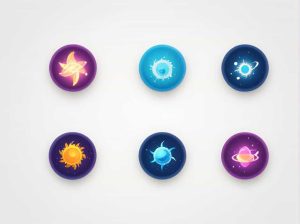Venus, often called Earth’s twin, is the second planet from the Sun and one of the brightest objects in the night sky. While it may seem similar to Earth in size and composition, Venus has unique orbital and rotational characteristics that make it stand out. One of the most fascinating aspects of Venus is how long it takes to revolve around the Sun and how its rotation is different from most planets.
Venus’ Revolution Around the Sun
Venus takes approximately 225 Earth days to complete one full orbit around the Sun. This means a Venusian year is much shorter than an Earth year, which lasts 365 days.
Comparison of Venus’ Orbit with Earth’s
| Planet | Time to Orbit the Sun | Distance from the Sun |
|---|---|---|
| Venus | 225 Earth days | ~108 million km |
| Earth | 365 Earth days | ~150 million km |
Because Venus is closer to the Sun than Earth, it experiences stronger gravitational forces, causing it to move faster along its orbital path.
How Fast Does Venus Travel Around the Sun?
Venus orbits the Sun at an average speed of about 35 km per second (22 miles per second). This is faster than Earth’s orbital speed of 29.8 km per second. Its shorter orbit combined with its higher speed results in a quicker revolution.
Venus’ Unusual Rotation
One of the most intriguing facts about Venus is that its rotation is extremely slow and in the opposite direction compared to most planets, including Earth.
How Long is a Day on Venus?
Unlike Earth, where a day lasts 24 hours, a day on Venus (one full rotation on its axis) takes 243 Earth days. Surprisingly, this means that a Venusian day is longer than its year!
| Feature | Venus | Earth |
|---|---|---|
| Length of a Day (Rotation) | 243 Earth days | 24 hours |
| Length of a Year (Revolution) | 225 Earth days | 365 Earth days |
This unusual characteristic means that if you were standing on Venus, the Sun would appear to move very slowly across the sky, taking months to set and rise again.
Why Does Venus Rotate Backward?
Most planets, including Earth, rotate counterclockwise when viewed from above the Sun’s north pole. However, Venus rotates in the opposite direction, a phenomenon known as retrograde rotation. Scientists believe this might have been caused by a massive collision with an asteroid or another celestial body billions of years ago, altering its spin.
Effects of Venus’ Orbit and Rotation
1. Extreme Temperature Differences
Venus is the hottest planet in the Solar System, even though Mercury is closer to the Sun. Its thick atmosphere traps heat, creating a runaway greenhouse effect that keeps surface temperatures at around 475°C (900°F)—hot enough to melt lead.
2. Long Sunrises and Sunsets
Because of its slow rotation, the Sun takes a very long time to rise and set on Venus. A single Venusian day (from one sunrise to the next) lasts about 117 Earth days.
3. No Significant Seasonal Changes
Unlike Earth, Venus does not have noticeable seasons because it has an almost circular orbit and a very small axial tilt of only 3 degrees. This means there is little variation in temperature throughout the year.
Could Venus’ Orbit Change Over Time?
Venus’ orbit is relatively stable, but over millions of years, gravitational interactions with other planets, particularly Jupiter, could slightly alter its path. However, these changes would be gradual and not significantly impact its revolution time in the near future.
Venus takes 225 Earth days to complete one revolution around the Sun, making its year shorter than Earth’s. However, its slow and retrograde rotation means a single day on Venus lasts 243 Earth days—even longer than its year! This unusual motion, combined with its thick, toxic atmosphere and scorching temperatures, makes Venus one of the most fascinating yet inhospitable planets in our Solar System.



